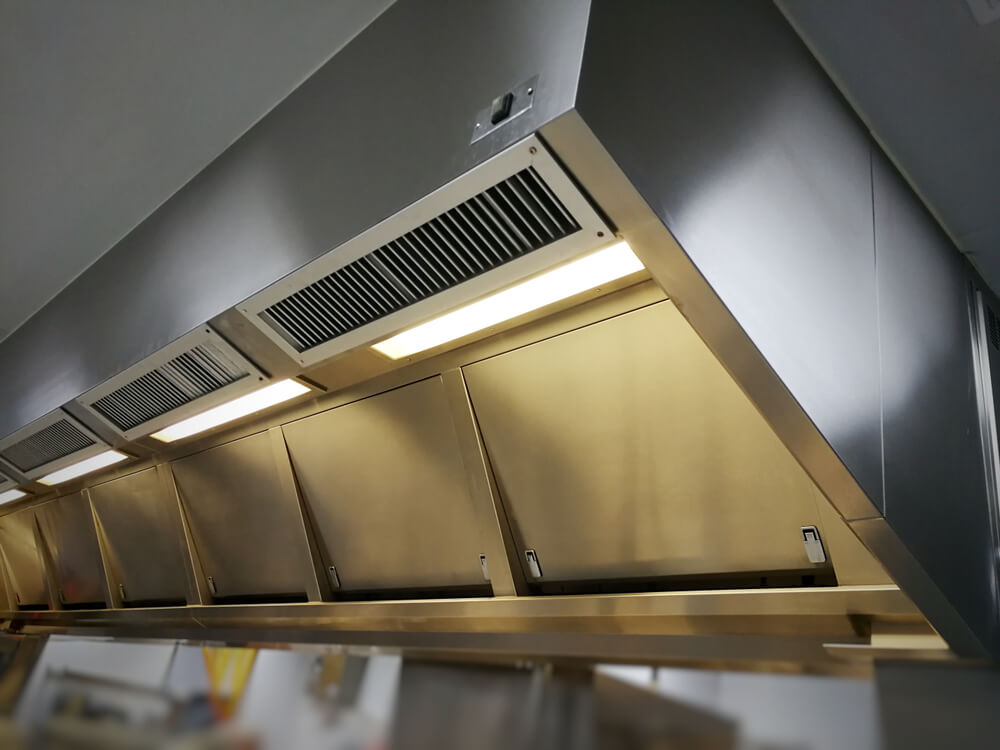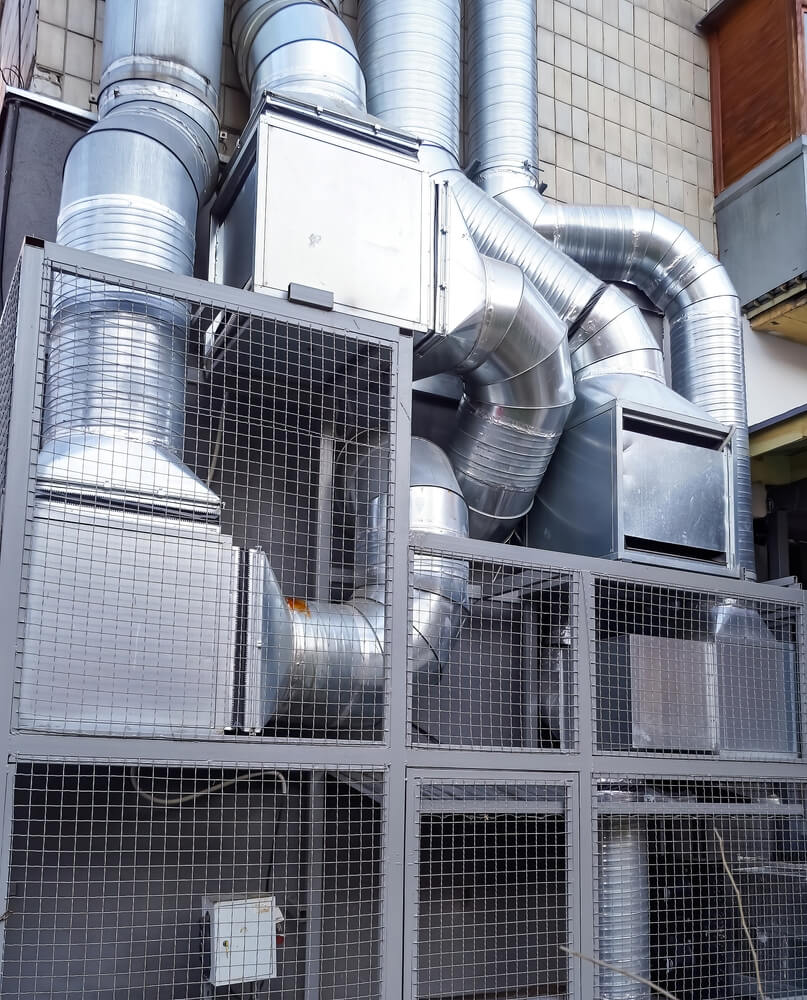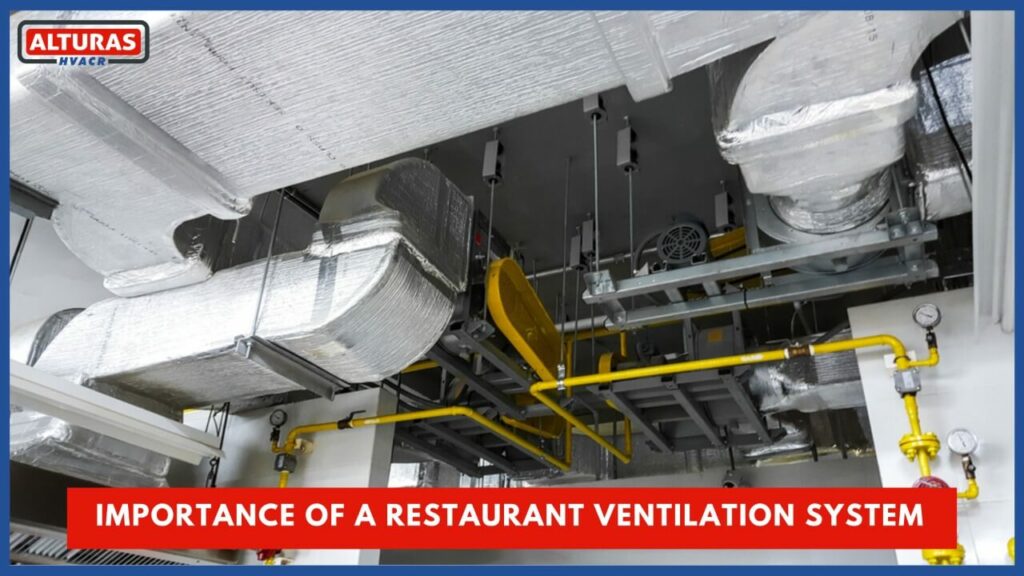The ambience of a restaurant encompasses a range of factors, encompassing not only tasteful cuisine but also exceptional service and a welcoming environment. All these components play vital roles in creating a pleasing atmosphere that not only draws in customers but also enhances their overall dining satisfaction.
The dining experience can be memorable when the food is presented in the correct environment, but it can be quickly destroyed by a defective restaurant ventilation system. Because restaurant kitchens release heat, foul odor, and oil throughout the cooking process, the atmosphere can become extremely hot and suffocating for the customers.
As a result, an efficient ventilation system is an essential component of a restaurant’s kitchen. An exhaust removes cooking residue and heat from the environment, keeping it fresh and clean.
In this article, we’ll take a deep look at restaurant ventilation systems, including their many forms, benefits, and needs.
What is a Restaurant Ventilation System?
The ventilation system is a mechanical system that is specifically designed to ensure a controlled flow of fresh air into a building or enclosed space. At the same time, it effectively removes any stale or contaminated air present. The main objective of a ventilation system is to ensure the quality of indoor air by controlling the flow of outdoor and indoor air.
The selection varies over several factors, such as the design of the building, the local climate, the occupancy, and the goals for energy efficiency.
Types of Ventilation Systems in Restaurants

Before investing, it is important to know the various types of ventilation systems that can be installed in a restaurant. There are various types of ventilation systems available, which can be selected based on the indoor area and its natural air supply. These systems aim to create a healthy breathing environment for customers.
How to Install Restaurant Hood
Natural Ventilation
Natural ventilation exchanges indoor and outdoor air without mechanical systems. Benefits include cost-efficiency, health improvement, and daylight access. Unsuitable for larger restaurants.
Mechanical Ventilation
Mechanical fans are commonly placed in windows or ducts to manage air movement in and out of buildings. They regulate indoor air by expelling stale air and introducing fresh air. However, they are weather-dependent and may require adjustments in humid or cold conditions to minimize particle infiltration or condensation.
Exhaust Ventilation
Exhaust ventilation systems work by using an exhaust mechanism to draw out stale air through a duct. Exhaust systems depressurize the building by reducing the air pressure inside, causing it to be lower than the pressure of the outdoor air. It is then replaced with fresh air from the outside. It prevents the accumulation of steam or humidity in the area.
Hood System Ventilation
Hood system ventilation in restaurants involves specialized hoods installed above cooking equipment to capture heat, grease, smoke, and odors. These kitchen hood systems use exhaust fans and ductwork to remove contaminants and maintain a clean, safe kitchen environment. Properly designed hoods are crucial to ensure compliance with safety standards and regulations while enhancing indoor air quality for staff and patrons. The hood ventilation system consists of six main styles:
- Single Island Canopy
- Double Island Canopy
- Wall Mounted Canopy
- Back Shelf Hood
- Eyebrow Style Hood
- Pass-Over Style Hood
Make-up Air System Ventilation
These systems introduce fresh outside air to replace the indoor air, regulating healthy air pressure and minimizing the circulation of smoke, heat, and harmful gases indoors. In food service establishments, proper ventilation is essential for maintaining food safety by reducing contaminants and ensuring a clean cooking environment.
Restaurant Ventilation System Cost
Restaurant ventilation system costs vary depending on kitchen size, culinary equipment, local construction rules, and complexity. Various restaurant ventilation systems’ preliminary cost estimates:
- Basic Exhaust Hood System: $5,000 to $10,000.
- Medium-Sized Restaurant: $10,000 to $30,000.
- Large or High-End Restaurant: $30,000 to $100,000 or more.
If you are looking for an affordable, on-demand commercial ventilation system and exhaust hood installation in Los Angeles for your commercial kitchen.
Complete HVAC System Costs Guide
How to Choose a Restaurant Ventilation System?
- Determine kitchen size, layout, and cooking equipment to assess ventilation needs.
- Comply with local building codes and regulations for exhaust system specifications.
- Choose between Type I or Type II hood systems based on cooking methods and pollutants produced.
- Size the hood correctly to cover all cooking equipment adequately.
- Consider additional features like fire suppression, makeup air units, and energy-efficient components.
- Consult with HVAC professionals or engineers for proper system design and installation to ensure safety and efficiency.
Helpful for you: Make-up Air for Commercial Kitchen Hoods
Importance of Restaurant Ventilation System

A well-designed ventilation system is essential for any commercial kitchen, particularly when it comes to maintaining air quality and safety. Kitchen hoods and exhaust fans play a vital role in removing grease, smoke, and heat from the cooking area, ensuring a clean and safe environment for staff and customers. Hood systems are designed to capture and filter out grease-laden vapors, preventing buildup that could lead to fire hazards or reduced efficiency. To prevent short cycles and ensure optimal performance, regular maintenance of kitchen exhaust hoods and ventilation systems is necessary, to keep commercial kitchens running smoothly.
Improved Air Quality
A significant quantity of airborne contaminants, such as particles, odor, smoke, and grease, can accumulate in the environment of a restaurant during food preparation. Carbon monoxide is also emitted by gas cylinders in restaurants. A ventilation system effectively removes these contaminants, thereby enhancing the overall ambience of a restaurant.
Odors and Grease Removal
During the cooking process, various odors are released, such as those from cooked food, burnt food, spices, and burnt oil. The grease that is released from cooking oil forms a layer on walls, ceilings, floors, and equipment. The kitchen’s odors and grease can be effectively eliminated by implementing a suitable ventilation system. Installing a barrier will effectively prevent any potential escape into the dining area, ensuring a pleasant environment for all customers.
Energy Efficiency
Installing a proper ventilation system in the kitchen efficiently removes heat, thereby reducing the need for cooling and increasing the overall efficiency of your HVAC system. This results in reduced utility bills and decreased operating costs.
Lower Temperatures
An effective ventilation system helps remove the hot air that rises from an area, leaving the cold air at the bottom. Proper installation of a ventilation system has the potential to significantly reduce temperatures by 30 degrees Fahrenheit or even more.
Reduce the Risk of Health Problems
Breathing problems such as asthma can be triggered by irritants like air pollutants, smoke, cooking odors, and dust. These irritants can lead to various health issues such as skin allergies, headaches, skin problems, and rashes. In order to prioritize the well-being of staff, it is crucial to provide them with a healthy work environment that minimizes potential risks. Ensuring that an area or restaurant is well-ventilated is important to prevent staff and customers from being exposed to hazardous conditions.
Reduces dampness
In the winter in Los Angeles, the restaurants get damp because of the water vapors that accumulate in the air. The restaurant ventilation system helps reduce dampness and eliminates moisture and odor keeping the area fresh. A good ventilation system not only improves the air quality in the area but also helps control moisture.
Common FAQs About Restaurant Ventilation System
How Important is a Restaurant Ventilation System?
A proper ventilation system is essential for a restaurant’s clean air, absence of cooking odors, and customer comfort.
What is the Purpose of a Ventilation System?
The main purpose of an effective ventilation system is to supply fresh air, eliminate indoor pollutants, control temperature, and prevent the accumulation of moisture in enclosed areas.
How to Prevent Improper Ventilation in the Restaurant?
To prevent improper ventilation in a restaurant, ensure regular maintenance of exhaust systems, clean filters, and ducts. Conduct periodic inspections to identify and address any blockages or malfunctions. Properly size the ventilation system according to the kitchen’s needs and layout. Educate staff on ventilation importance and encourage adherence to best practices, such as avoiding blocking vents and keeping doors closed when feasible.
How does restaurant ventilation work?
Restaurant ventilation involves hoods capturing cooking byproducts, which are then channelled through ducts by exhaust fans and expelled outdoors. Makeup air units might replace extracted air. This system ensures heat, smoke, grease, and odors are removed, maintaining a healthy indoor environment and complying with safety standards.
Which type of vent system is used mostly for commercial kitchens?
In commercial kitchens, the most commonly used ventilation system is the “Type I hood.” These hoods are designed to handle heat, grease, smoke, and combustible byproducts generated during cooking processes. They effectively capture and remove these contaminants through ductwork and exhaust fans, ensuring a safe and clean kitchen environment.

